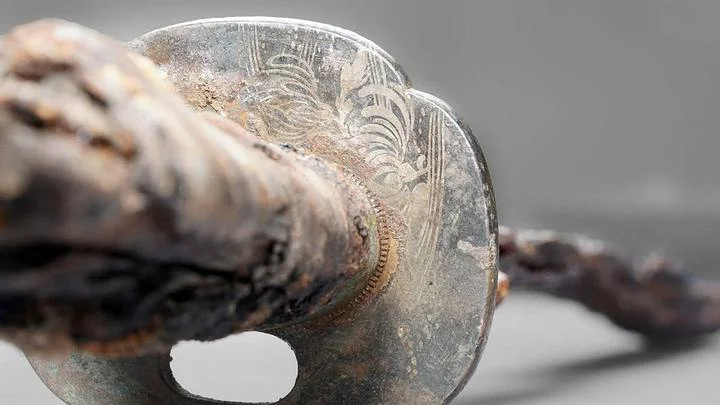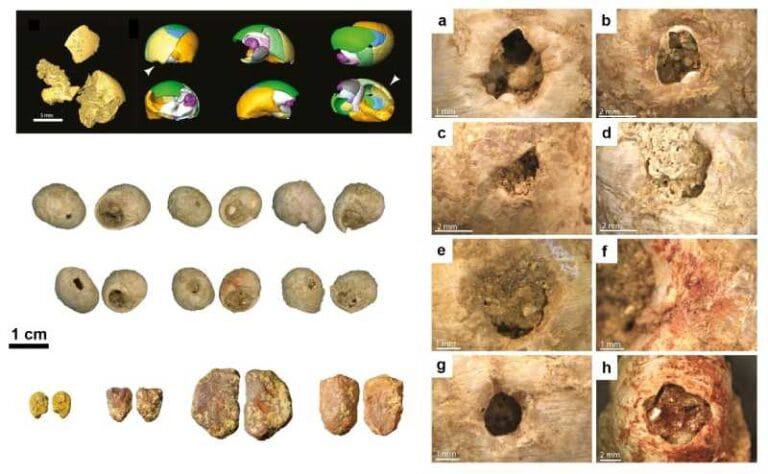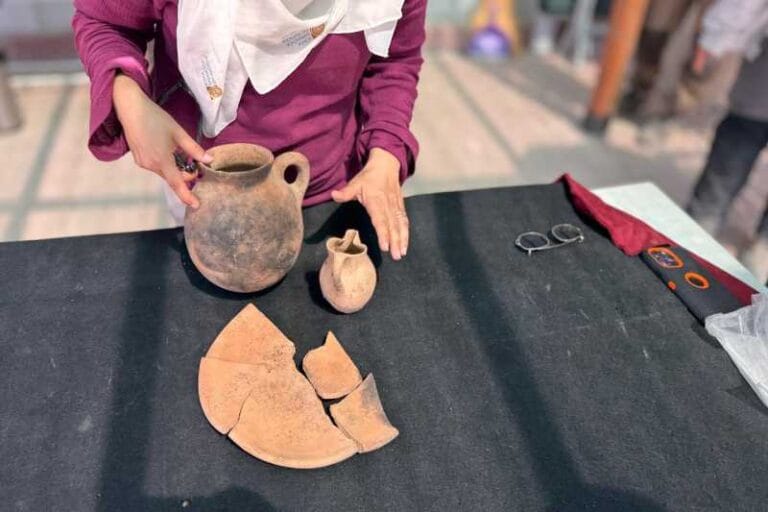17th century samurai sword found in Berlin

During an excavation in the Molkenmarkt area, Berlin’s oldest square, archaeologists from the city’s State Monuments Office made a surprising discovery: a Japanese short sword, known as a wakizashi, dating back to the 17th century.
Initially, it was thought to be an ornamental parade sword, but restoration has revealed its true nature. The wakizashi was a traditional weapon of the Japanese samurai, often used together with the katana in a pair called daishō, which symbolized the samurai’s status and right to bear arms. In addition, this short sword had practical applications, being used in close combat and in rituals such as seppuku.

The sword was found in an old basement on Stralauer Street, an area that preserves traces of buildings from before the Second World War. During the war and the urban renovations of the 1960s, many old basements and structures were buried, accumulating debris and historical artifacts. The wakizashi discovered was in poor condition, corroded and fragmented, with its handle damaged by the heat. Despite this, fragments of the hilt’s wood, fabric sheath and stingray skin were preserved.
After cleaning, decorative elements such as a motif of Daikoku, one of Japan’s gods of fortune, were revealed on the sword’s guard. These decorations, together with the presence of chrysanthemums and water lines on the tsuba (guard), indicate that the hilt belongs to the Edo period, which spans from the 17th to the 19th century.

Interestingly, the X-ray of the sword showed that the blade had originally been longer and was later shortened, suggesting that the blade may be older than the hilt, possibly from the 16th century. This is evidenced by the fact that the blade’s spike had two holes for pegs, while the modern hilt only used one, indicating a later adaptation.

Commenting on this discovery, Matthias Wemhoff, Berlin’s state archaeologist and director of the Museum of Prehistory and Protohistory, expressed his astonishment: “Who would have thought that, at a time when Japan was isolated and hardly any European travelers had reached the country, such an elaborate weapon would have been used for so long.”
The origin and journey of this wakizashi to Berlin remain shrouded in mystery. Researchers speculate that the sword may have been brought as a diplomatic gift during the Japanese missions of Takenouchi in 1862 or Iwakura in 1873, when emissaries from Japan visited Europe to establish diplomatic and trade relations.
The proximity of Molkenmarkt to noble palaces such as the Berlin Palace reinforces this hypothesis, suggesting that the sword may have been part of a cultural exchange between Japan and Germany. This discovery opens up new questions about interactions between East and West in the past, highlighting the complex network of global connections, even in periods of cultural isolation.






